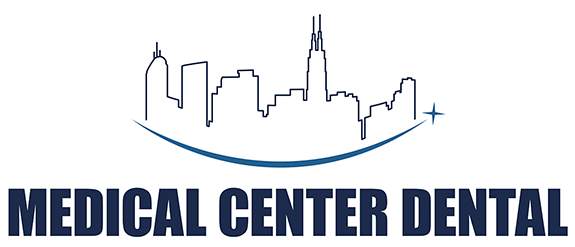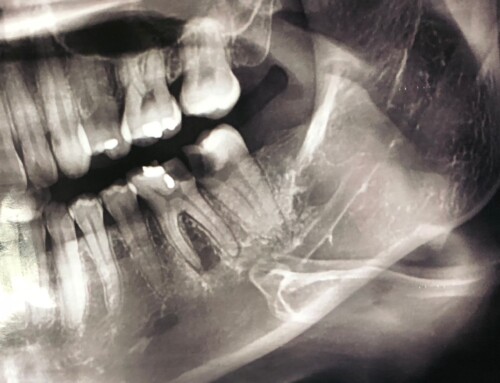Is Water Flossing Better Than Regular Flossing?
From a young age, you learn the basics of dental care from your caregivers and your dentist. You learn that in order to maintain healthy teeth and prevent cavities, you need to brush a minimum of twice a day and floss daily.
As dental care technology advances, your options for both brushing and flossing became more varied. It’s no surprise that individuals are sometimes confused about which type of toothbrush is best for different dental issues. Another frequent dental health question involves the use of a Waterpik vs. flossing with traditional dental floss.
By learning more about each type of floss, you can make a more informed decision about which method works best for your dental health needs. If you have any questions about flossing methods or devices, your dentist can help walk you through the process.
The Importance of Flossing
Brushing and flossing teeth are considered the basics of good dental hygiene. Brushing should be conducted at a minimum of twice a day and is most useful in the morning and at night after your last meal of the day.
Although a thorough brushing can remove most of the food particles left behind after eating, daily flossing is equally as important. Flossing removes particles that brushing often leaves behind, particularly in the spaces between teeth and the areas where the gum line meets the teeth.
Over time, plaque also builds up on the teeth, and regular flossing can help reduce the amount of buildup that occurs. In order to learn how to floss, most people follow the example of parents or other caregivers. A dentist can also teach you the proper method of flossing that you can repeat from home.
Although flossing has traditionally been taught using boxed floss, many individuals are now exploring other flossing methods such as stick flossing and water flossing.
Traditional Flossing: An Overview
When someone mentions the word flossing, the traditional method of flossing typically comes to mind first. The goal of flossing is to remove areas of plaque as well as leftover food particles from the space between each tooth.
Traditional flossing involves using a small, thin string pushed into these spaces and then gently moved up and down on the tooth surface to scrape away these particles. This movement also removes particles from the exterior of the gums around each tooth.
Traditional Flossing: Method
Once you learn to floss from a caregiver or your dentist, the process is easy to replicate. There are several different types of traditional floss available, so you can find one that suits your preferences.
Some flosses are waxed for easier gliding, while others are left unwaxed. You can choose a flavor, typically mint, or use unflavored floss. Floss is available rolled up into a box or a tube or can come pre-mounted on a stick for easier maneuvering.
Regardless of the type of traditional floss you choose, the general method in flossing remains the same.
- If using boxed floss, remove a long piece of floss and wind it around one finger of each hand.
- Leave a small length of floss exposed between the hands, pulling it taut.
- Gently maneuver the floss back and forth between two teeth until the floss slides down the length of the space.
- Slide the floss gently into the space between the tooth and gums, hugging the tooth.
- Repeat in the spaces between all teeth on both the top and the bottom.
Traditional Flossing: Advantages
Flossing regularly reduces plaque buildup and decreases the likelihood of developing cavities between the teeth and at the gum line. Traditional floss is inexpensive, readily available, and highly portable, making it the most popular flossing method among most individuals.
Since this method is also very effective at removing particles and plaque, it is still the primary method of flossing taught by dentists and caregivers. Flossing sticks make the process easier for those who have difficulty maneuvering string floss between their fingers.
Traditional Flossing: Disadvantages
Although traditional flossing is an effective particle-removing method, there are some disadvantages to string floss. For some individuals, particularly those with crowded or crooked teeth, it can be difficult to reach all areas of the mouth to floss properly.
Orthodontics also make it difficult or impossible to floss using the traditional method. If you do not floss regularly, you can sometimes bleed around the gums when you decide to floss again.
With some individuals, flossing with string floss can also lead to heightened gum sensitivity.
Water Flossing: An Overview
Water flossing, also known as water picking, is a method of flossing that involves using a machine that produces a concentrated, directed stream of water to push particles away from the spaces between teeth and massage plaque away from the surface of the teeth.
Water flossing has gained popularity because it can be used in conjunction with orthodontics and dental devices that make traditional flossing difficult or impossible.
Water Flossing: Method
Water flossing requires a specialized machine to remove particles and plaque. Each brand and type of device has specific instructions for use, so before you try it for the first time, make sure to read the directions for your specific product.
The process of water flossing is generally similar, regardless of which product you use.
- The machine should contain a water reservoir, which should be filled before first use and as needed thereafter.
- Plug in the machine and place control on the desired setting. Until you adapt, the lowest setting should be used.
- Place the tip of the flosser inside your mouth and keep your lips closed as you lean over the sink.
- Turn on the machine and allow the water stream to flow over your teeth and out of your mouth into the sink.
- Maneuver the flosser around each tooth and near the gum line of each tooth until all teeth have been flossed.
- Turn off the machine, unplug, and clean according to the instructions that came with the device.
Water Flossing: Advantages
Using a water flosser is very effective at removing particles from between and around teeth as well as helping to dislodge plaque buildup. One of the major advantages is the ability for the water stream to move into spaces that may be difficult to reach with traditional floss.
Orthodontics or other dental devices do not block the ability to floss with a water pick, so the ability to floss thoroughly is not limited to those who do not need these types of devices. Crooked or crowded teeth are also not an issue when you water floss since the stream can be directed into tight spaces and spaces that are turned in usual ways.
Some individuals prefer a water pick because particles are removed and flushed out of the mouth at the same time, skipping the rinse that is needed after traditional flossing.
Water Flossing: Disadvantages
Although water flossing is an effective flossing method, there are certain disadvantages over traditional flossing that should be considered.
Most individuals are taught to use traditional floss from an early age, so using a water pick involves a learning curve. A water pick device can also be an expensive purchase, depending on the product you decide to use.
Once you own the product, you need to dedicate space to store the device when not in use since most people do not want the hassle of emptying and refilling the reservoir after each use.
Maintenance should also be factored into your decision since water pick devices do need to be maintained and cleaned properly for health purposes. Another disadvantage is the portability of a water pick device.
Most people do not want to bring a device during travel, and a device cannot be easily used in a bathroom at work or in public.
Traditional Flossing vs. Water Flossing
Learning the differences between traditional flossing and water flossing can help you decide which flossing type is right for you and your family.
Researching your water pick options at different price points as well as consulting with your dentist can both be useful tools during your decision-making process.
Consider a variety of different aspects, and ask yourself to decide and remember that what is right for you might not be right for other members of your family.
- Do you typically floss after each meal? If so, do you like to floss at a location other than your home?
- Are you able to reach all areas of your mouth with traditional floss?
- Do you have crooked or unusually crowded teeth that make traditional flossing difficult?
- Do you or other members of your family use or plan to use orthodontics?
- Do you or other members of your family have dentures, bridges, or partials?
- Do you have any dexterity issues that make traditional flossing difficult?
- Are your gums sensitive to traditional flossing, and do they typically bleed after you floss?
- Are you willing to commit to the upfront expenses as well as the ongoing maintenance of a water pick device?
Summary: Should You Use Traditional Floss, or is Water Flossing Better?
Most people have learned to floss using the traditional flossing method, but there can be advantages to using a water flossing device.
When it comes to deciding which type of flossing works best, there is not a ‘one size fits all’ answer. For many people, the answer may be to combine both methods of flossing to cover all bases.
When at home or during the use of temporary orthodontics, a water pick can be utilized. If you feel that it is important to floss while on the go, traveling with a box of floss or floss sticks can help meet your needs.
If multiple people in your household need a water pick device, everyone can use the same product since the heads are removable and usually color-coded for easy identification for each person.
Water picks are not just for adults. Many children, adolescents, and teens are able to successfully learn water flossing in addition to traditional flossing techniques.
Consult with your dentist to see if the use of a water floss is recommended for your particular situation.
Your Dental Health Questions Answered
Your dental health doesn’t just affect your smile and your looks. Dental hygiene affects many different aspects of your overall health, so it is vitally important to take care of your mouth.
By brushing multiple times a day and flossing regularly, whether with traditional floss or with a water pick, you can stay on top of your dental health game. In addition to maintaining your teeth at home, it is important to regularly visit your dentist for cleanings and dental health consultations.
If you have any questions concerning any dental condition or treatment option, contact Medical Center Dental to schedule an appointment or get your questions answered.
Our team of dental professionals can walk you through the process for proper dental hygiene maintenance and consult you on any issues you may be having with your teeth.
____________
Image Credit: Shutterstock/Alena Ozerova







